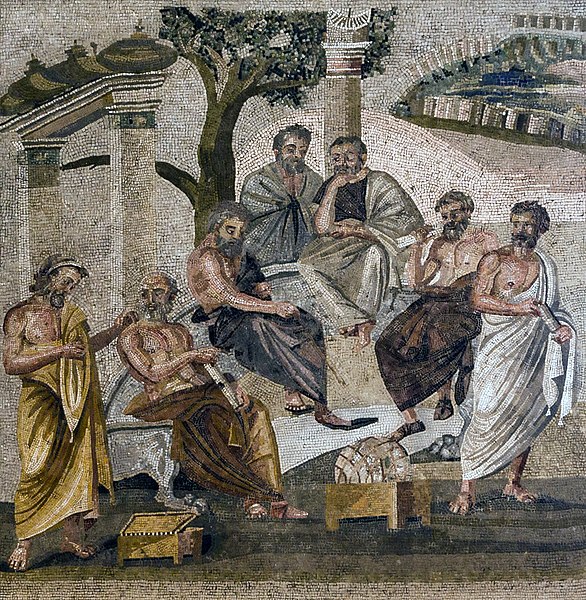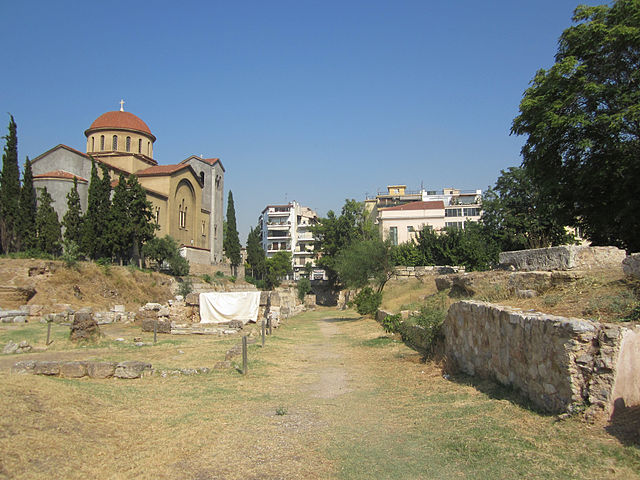Damascius, known as "the last of the Athenian Neoplatonists," was the last scholarch of the neoplatonic Athenian school. He was one of the neoplatonic philosophers who left Athens after laws confirmed by emperor Justinian I forced the closure of the Athenian school in c. 529 AD. After he left Athens, he may have sought refuge in the court of the Persian King Chrosroes, before being allowed back into the Byzantine Empire. His surviving works consist of three commentaries on the works of Plato, and a metaphysical text entitled Difficulties and Solutions of First Principles.
6th-century mosaic of Justinian I in the Basilique San Vitale in Ravenna, Italy. Damascius was head of the last neoplatonic school in Athens when the laws of Justinian I forced its closure.
The Academy, variously known as Plato's Academy, the Platonic Academy, and the Academic School, was founded at Athens by Plato circa 387 BC. Aristotle studied there for twenty years before founding his own school, the Lyceum. The Academy persisted throughout the Hellenistic period as a skeptical school, until coming to an end after the death of Philo of Larissa in 83 BC. The Platonic Academy was destroyed by the Roman dictator Sulla in 86 BC.
Plato's Academy mosaic – from the Villa of T. Siminius Stephanus in Pompeii.
The School of Athens by Raphael (1509–1510), fresco at the Apostolic Palace, Vatican City.
The archaeological site of Plato's academy.
Ancient road to the Academy.





